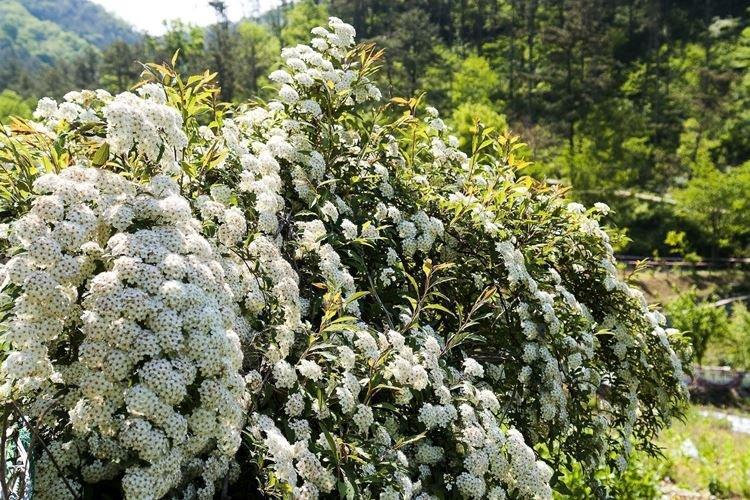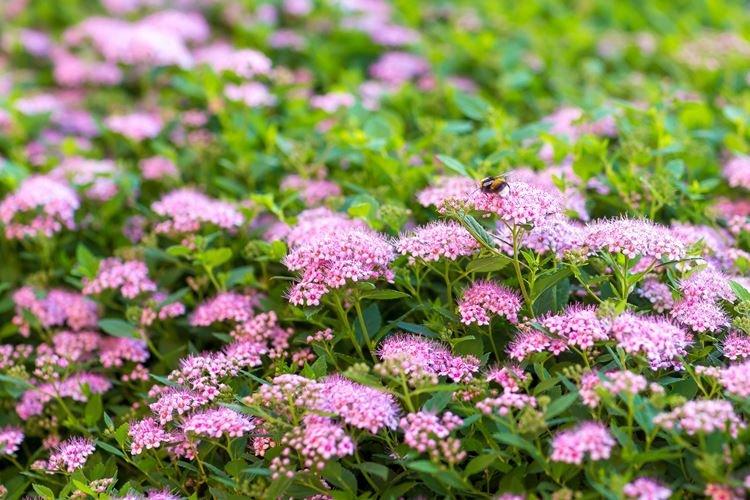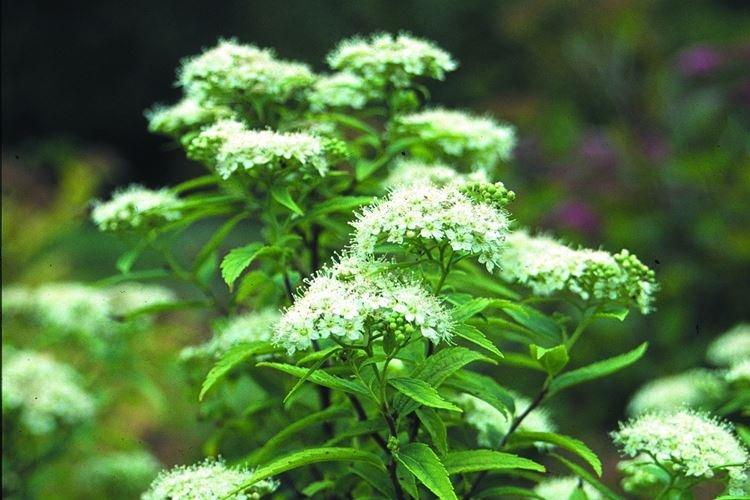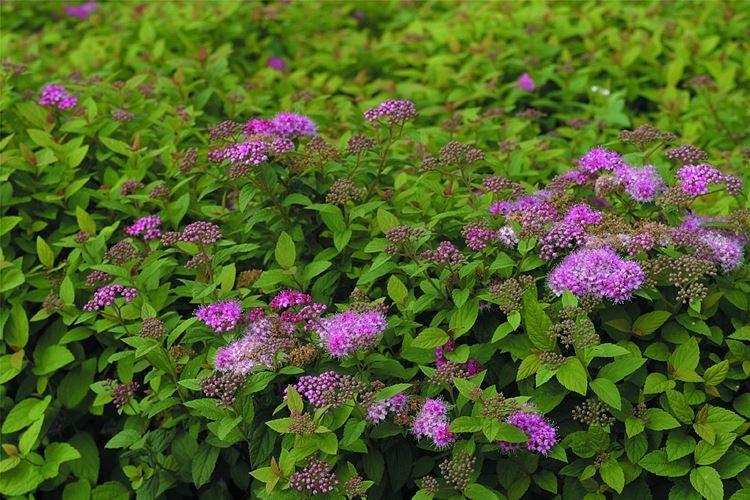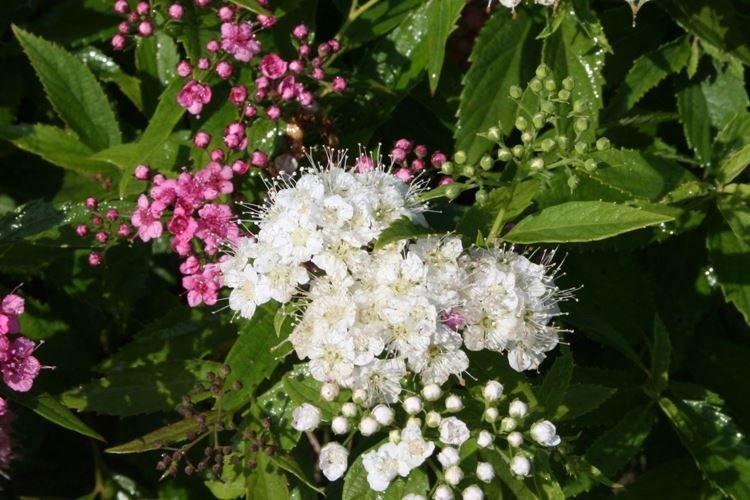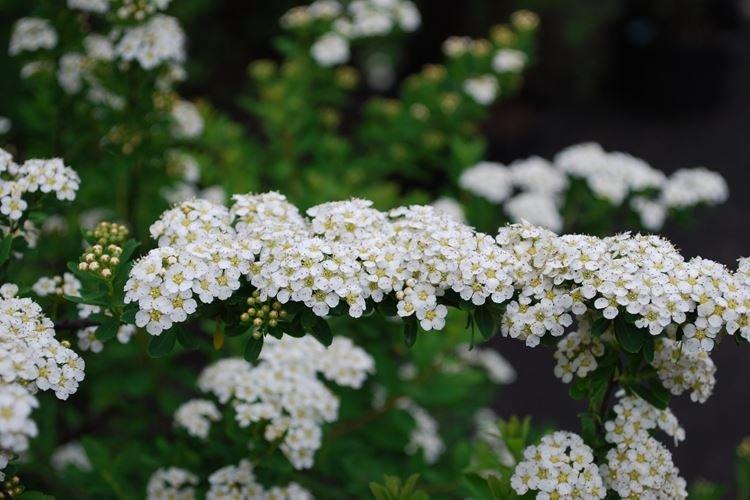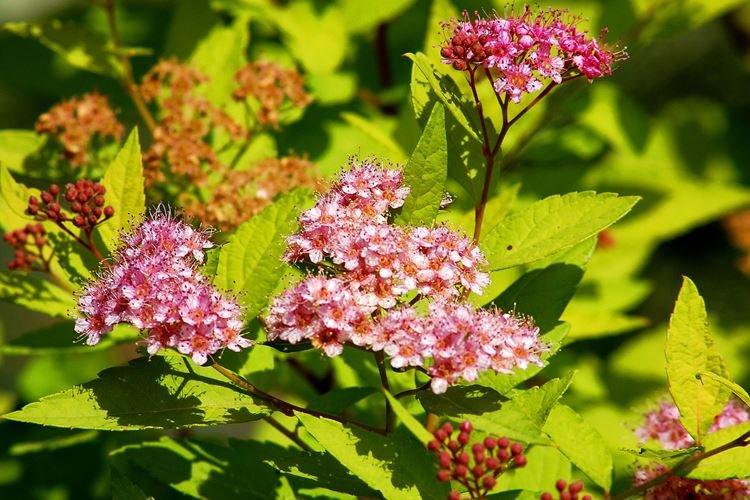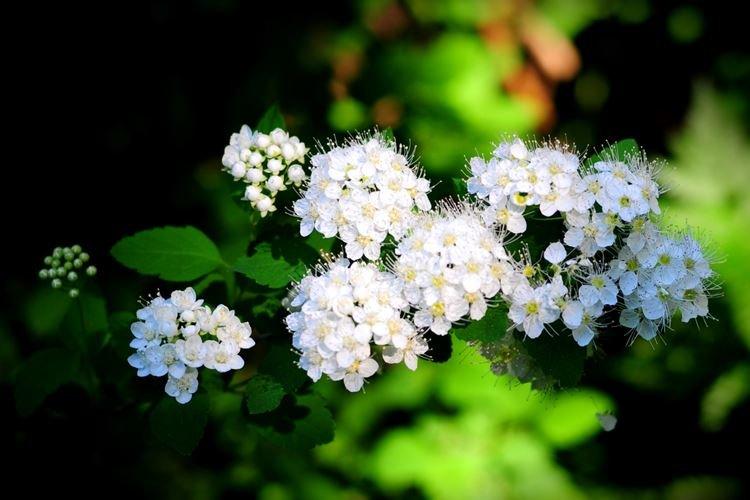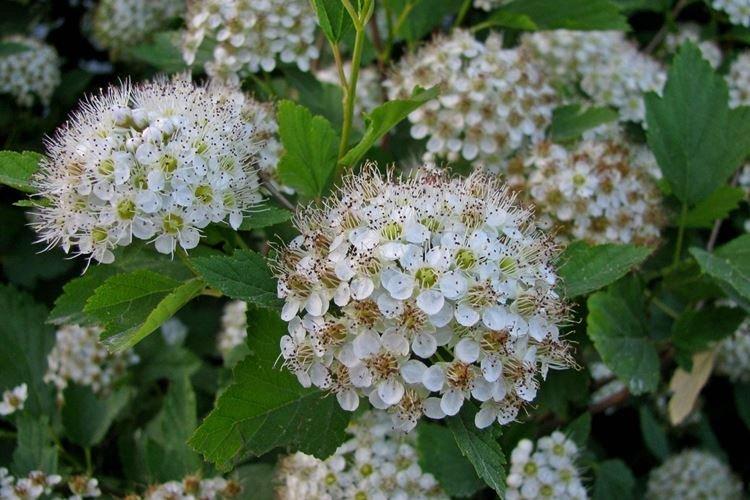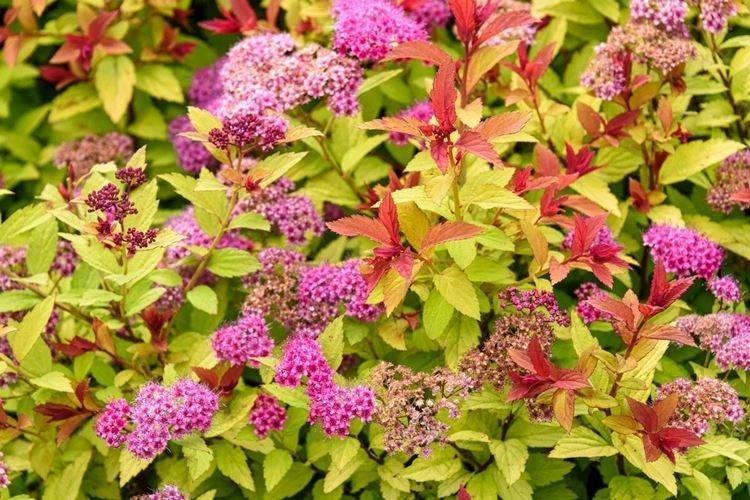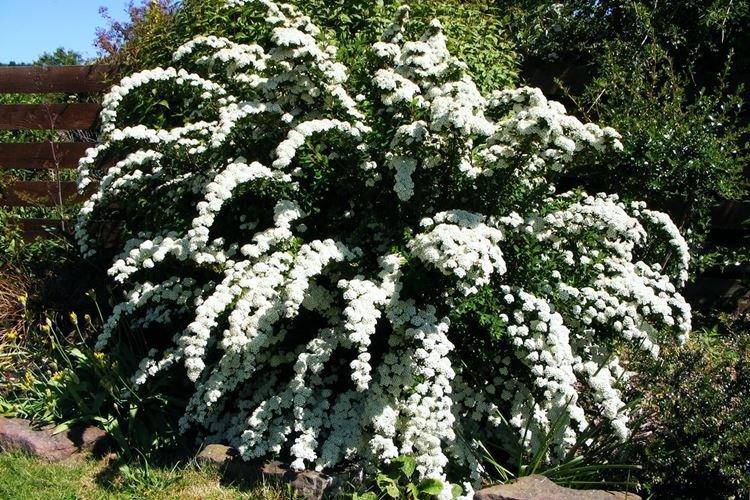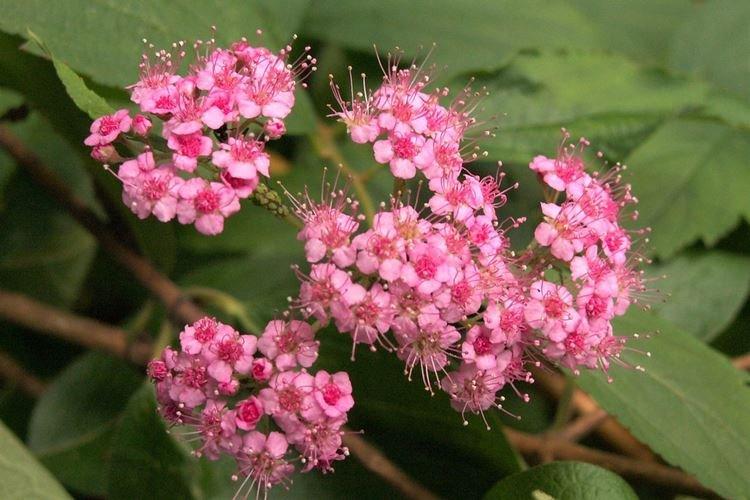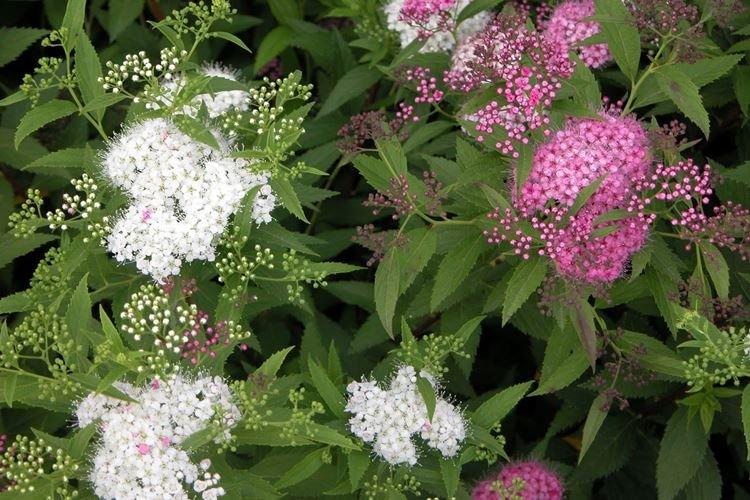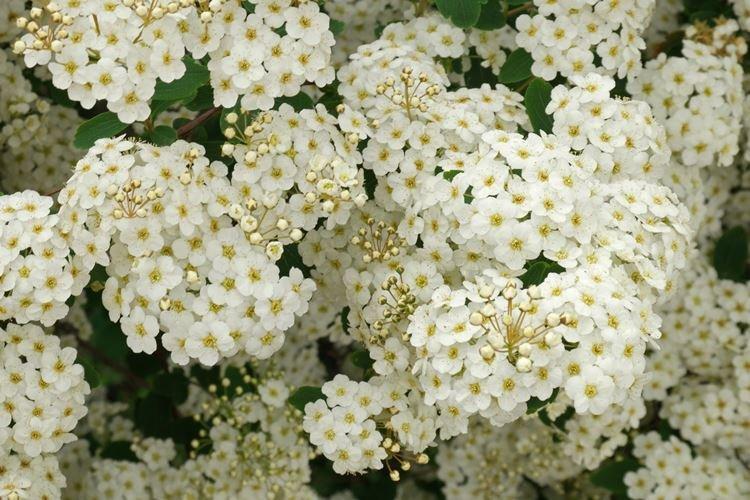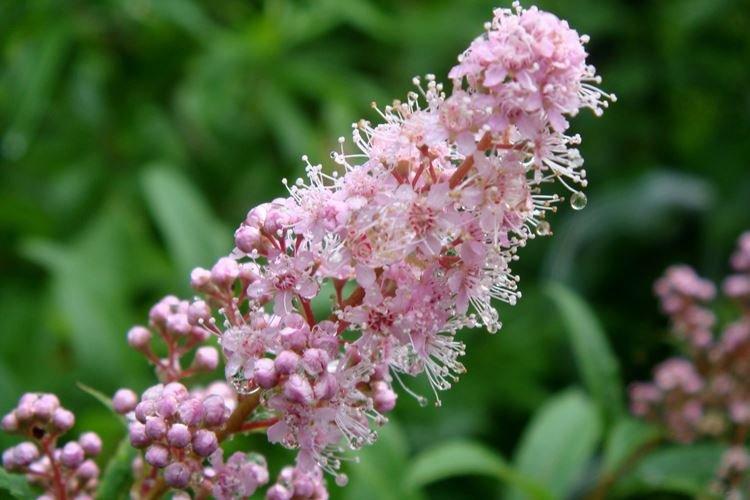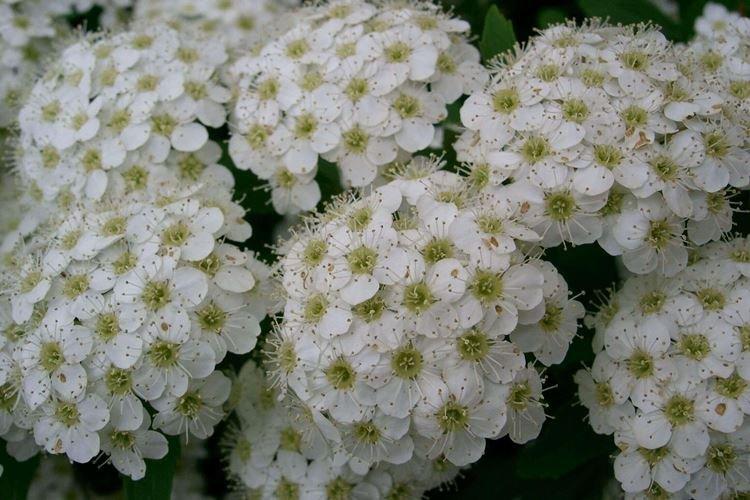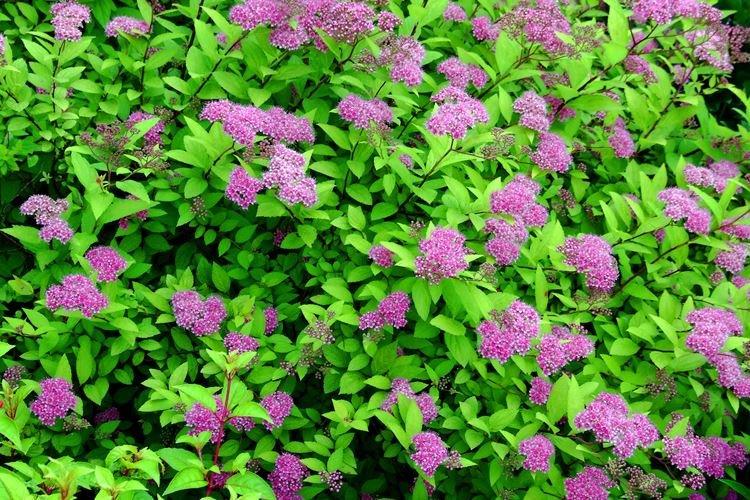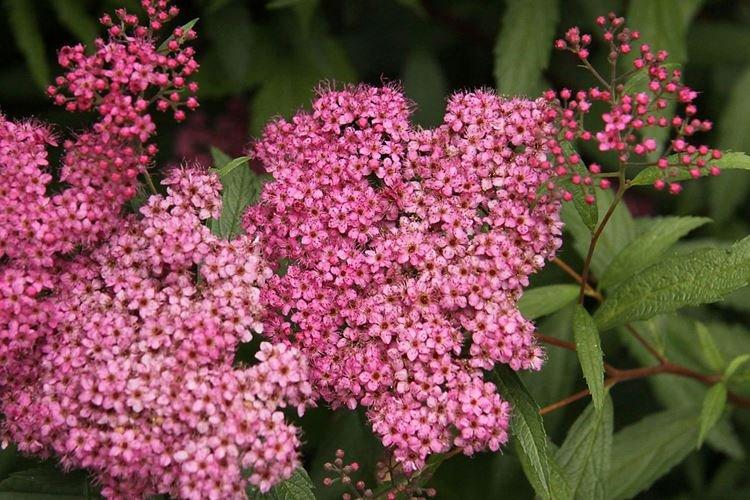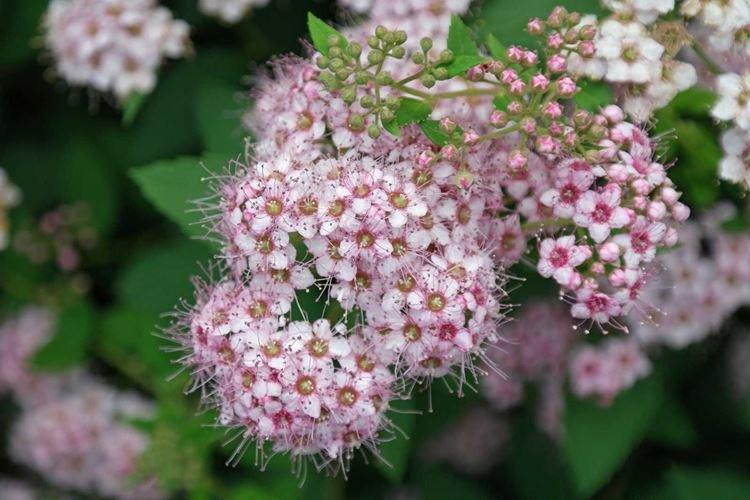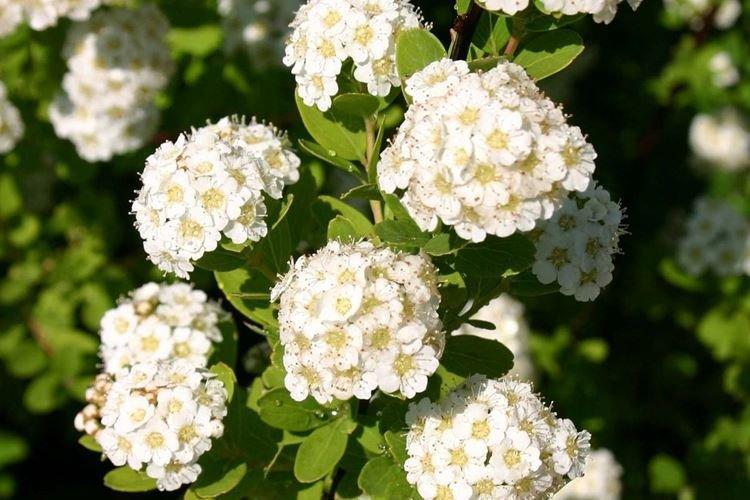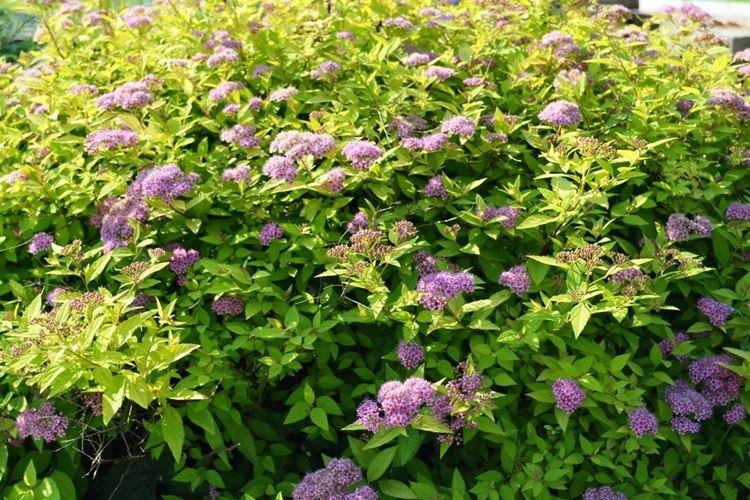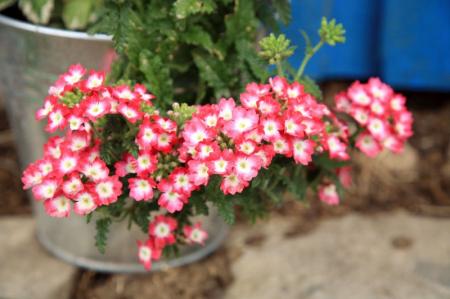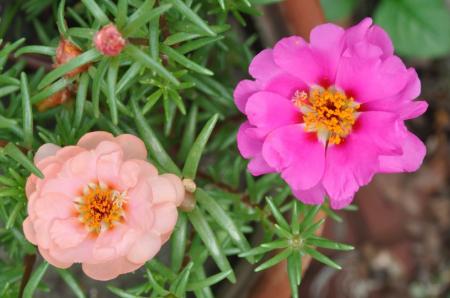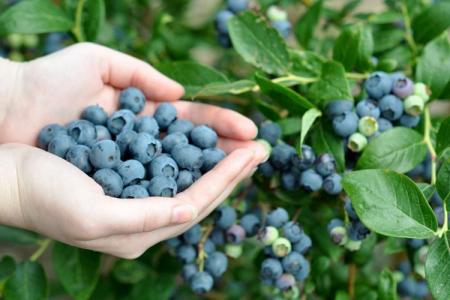
It is simply impossible to resist the gentle flowering of spirea. Ornamental shrubs are equally common in gardens or city parks. They are spectacular, unpretentious, well adapted to our latitudes and do not even need regular watering!
general information
Spirea got its name for surprisingly flexible shoots as for a shrub, because from ancient Greek this word literally translates as "bend". The people called the popular ornamental shrub meadowsweet, so it is likely that you know it by this name.
Spirea combines truly vital features for our latitudes. It is at the same time very unpretentious, resistant to severe frosts and blooms for a long time even on the hottest days.

There are dwarf spireas that barely stretch up to 20 cm and are well suited for rockeries. But there are also full-fledged tall shrubs of 1-1.5, or even up to 2.5 m. The meadowsweet bark has an interesting natural feature - it can flake off. This is its natural life cycle, which periodically scares inexperienced gardeners.
All spirae have shallow and superficial, but very developed fibrous roots. The branches and leaves can be of completely different types, but the flowers are often similar. They are small, but there are a lot of them, and they are always collected in large lush inflorescences. Shades range from pure white to deep deep pink.
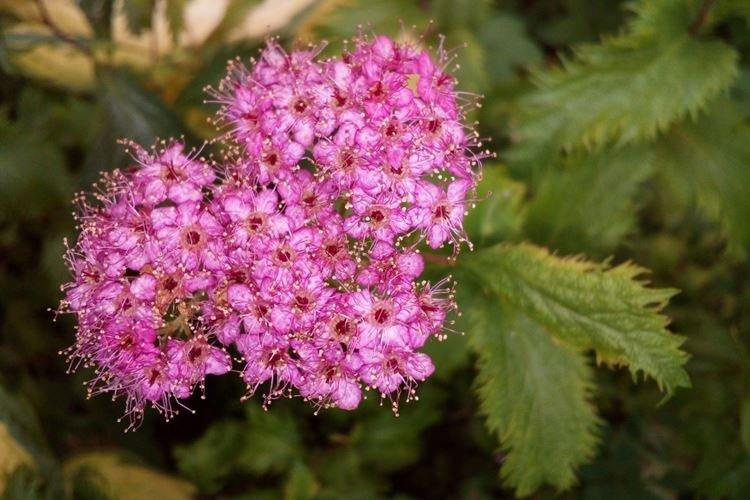
Types of spirea
There are about a hundred varieties of spirea, and they all differ in appearance, flowering period and some features of life. Today we will tell you about the most popular ones!
Spirea Wangutta
A large 2-meter shrub is good in decorative landscape compositions and hedges. It has a large and sprawling cascading crown that gives wide shade. Snow-white flowers bloom twice a season - at the beginning and at the end of summer.
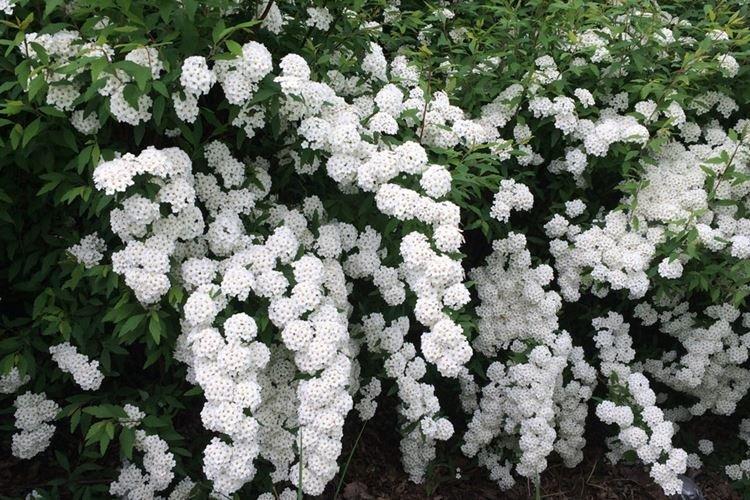
White spirea
The flowers of such a spirea look very gentle and romantic, and from a distance they resemble large white-green balls. The shrub is not too tall, but it grows well in breadth - up to a meter. Paniculate inflorescences stretch up to as much as 15 cm.
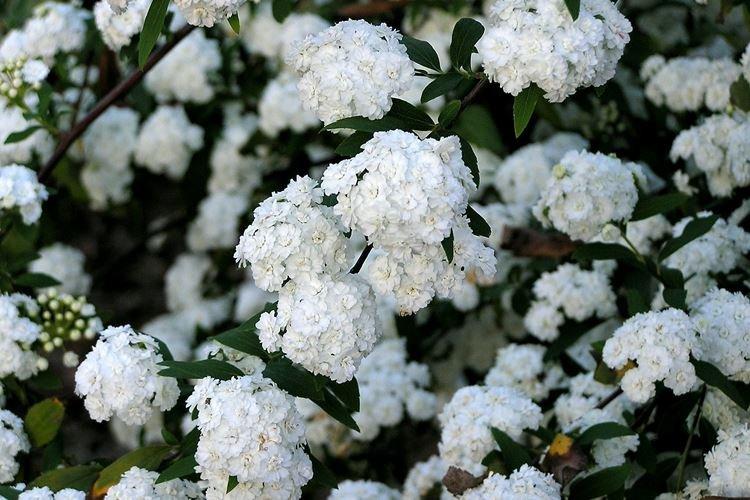
Gray spirea
This spirea blooms a little earlier than others and the shades of its inflorescences vary from white to grayish. A tall shrub, upon closer inspection, takes on a bizarre shape due to curved shoots.
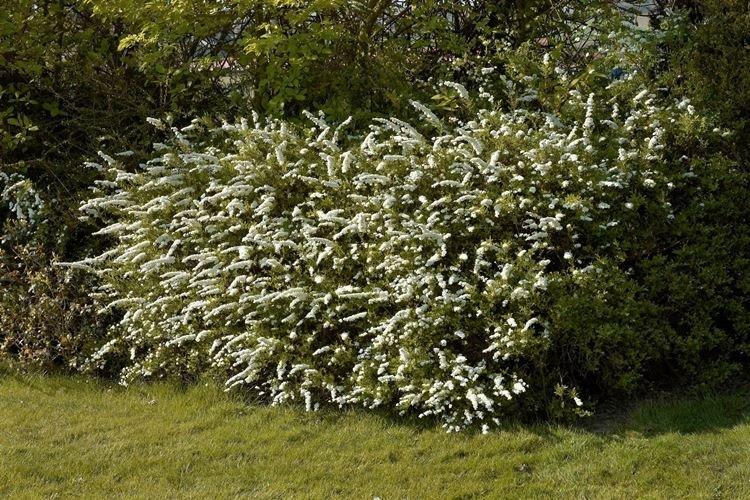
Spirea Grefsheim
This is a very effective decorative variety with such snow-white and dense flowers that it is popularly called May snow. Spirea Grefsheim is good even alone, and even more so - in a small group along garden and park paths.
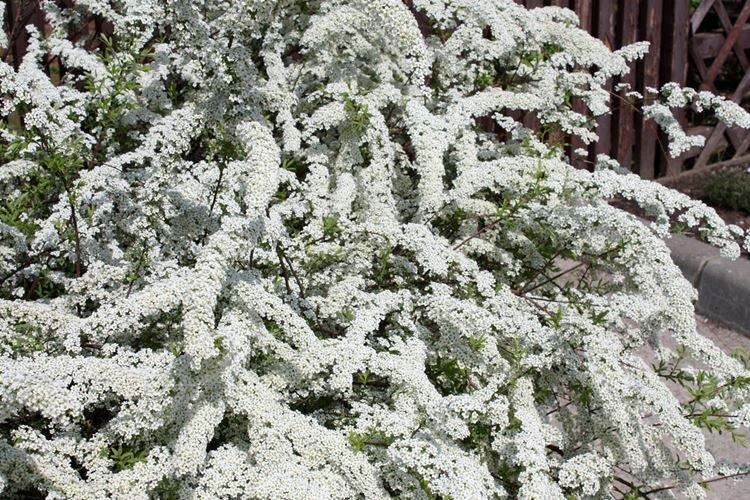
Spirea Douglas
Large pyramidal inflorescences of such a spirea resemble loose pink tassels. An interesting feature of the variety is the reddish and slightly pubescent shoots, with which the leaves with a silvery sheen contrast.
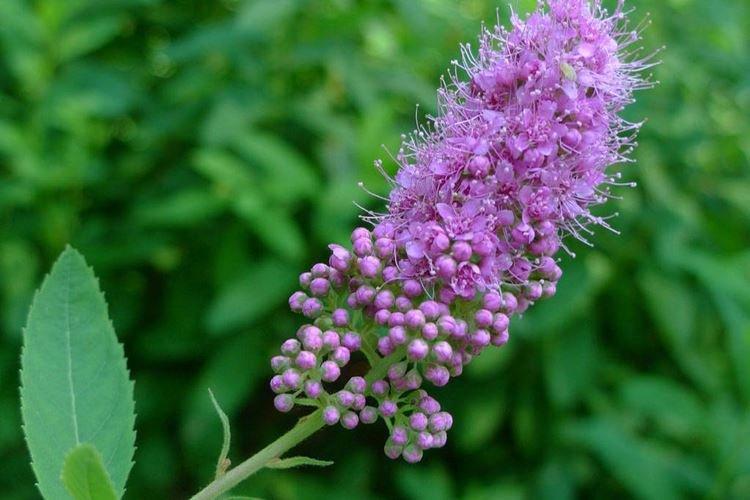
Spirea Bumald
Compact bushes up to 70-80 cm resemble a lush and resilient ball. Against a bright green background, red-pink and slightly variegated flowers stand out even more expressively. There are even more compact hybrids that fit perfectly into alpine slides and flower gardens.
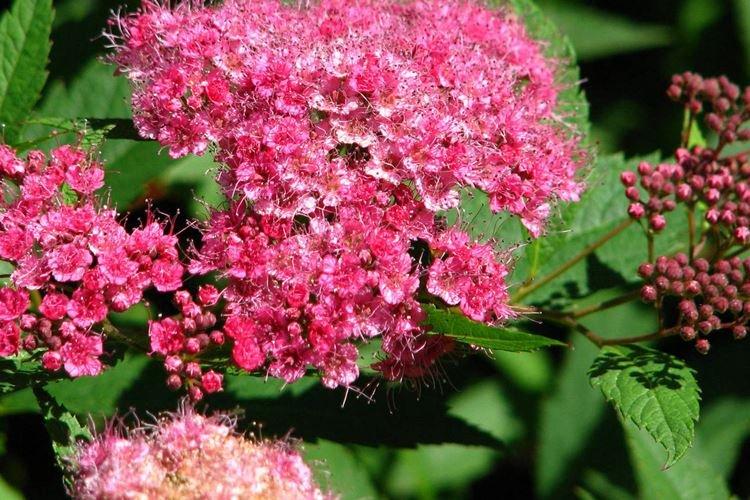
Willow spirea
This spirea loves moisture and ideally complements the pond, delighting with paniculate pink inflorescences. Its leaves really resemble willow, and this variety is often used in folk medicine as a source of invaluable trace elements.
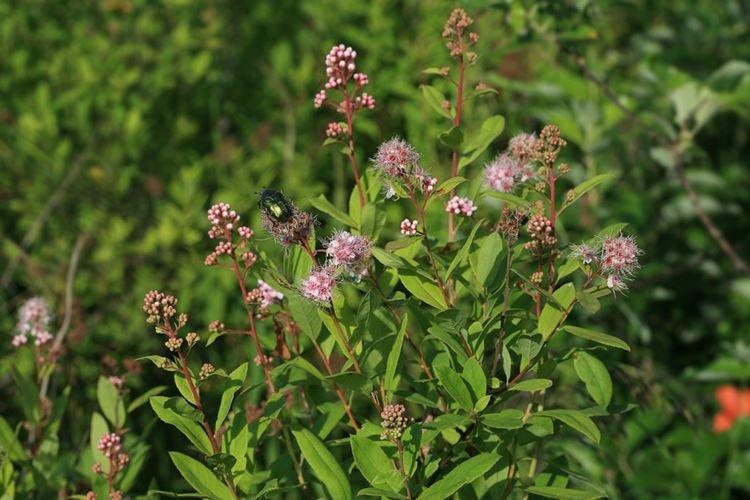
Oak spirea
The very early May variety is suitable for large group plantings and landscaping parks. A one and a half meter bush propagates well by root cuttings and easily tolerates forming pruning.
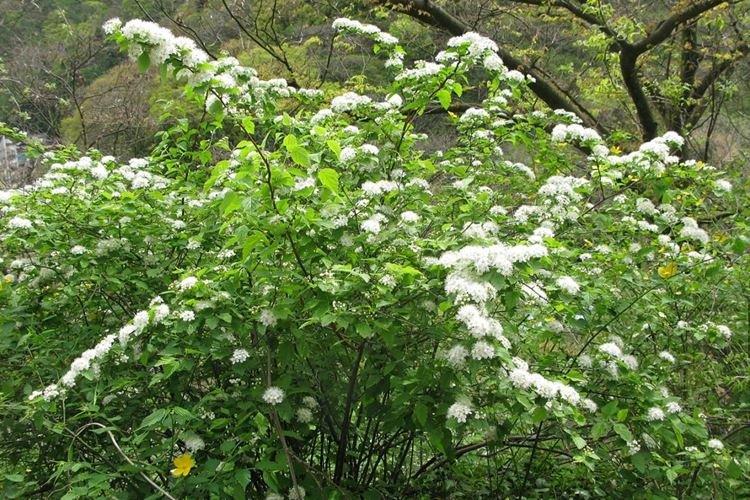
Japanese spirea
One of the brightest varieties came to us from the East and pleases with crimson, almost red flowers. Shoots up to one and a half meters long are crowned with bizarrely shaped lush inflorescences.

Spirea Thunberg
This is a medium-sized mountain variety, which has decorative not only flowers, but also leaves.In autumn, they acquire a rich orange hue and in themselves resemble lush inflorescences. But such a spirea is not the most frost-resistant, therefore, it can freeze in the northern regions.
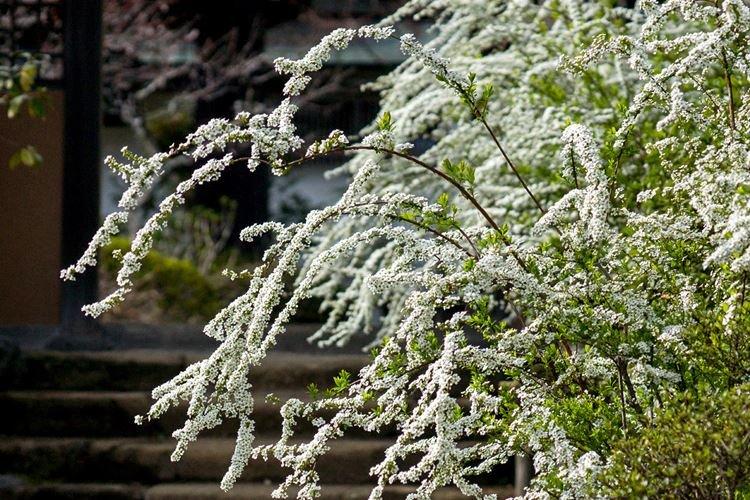
Spirea care
Spirea is amazingly unpretentious, almost does not get sick and pleases with lush flowering all summer. Flowers spike densely even on the hottest days, when the rest of the plants dry out and wither.
Temperature and lighting
Spirea prefers warm and bright lighting, but it is recommended to plant it on cloudy September days. With the onset of warmth, only summer varieties are planted in spring.
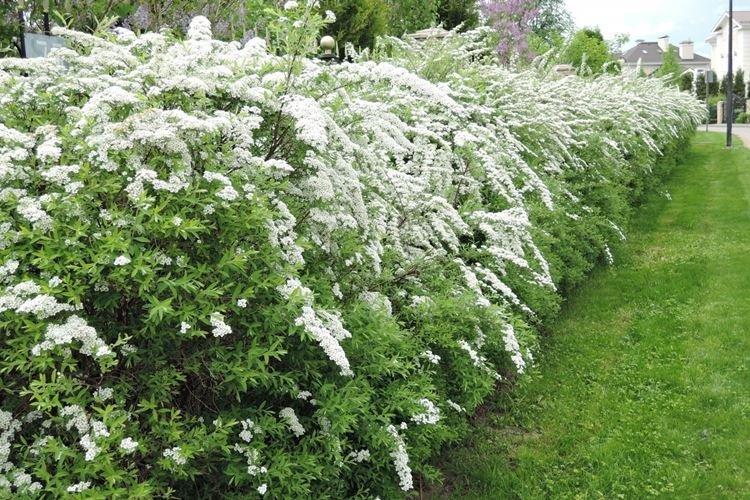
Watering
If the season is wet, natural precipitation is sufficient for the spirea. During months that are too dry, it is recommended that each bush is shed well at intervals of about 2-2.5 weeks. One spirea will take one and a half buckets of water, and it is convenient to combine the procedure with top dressing.
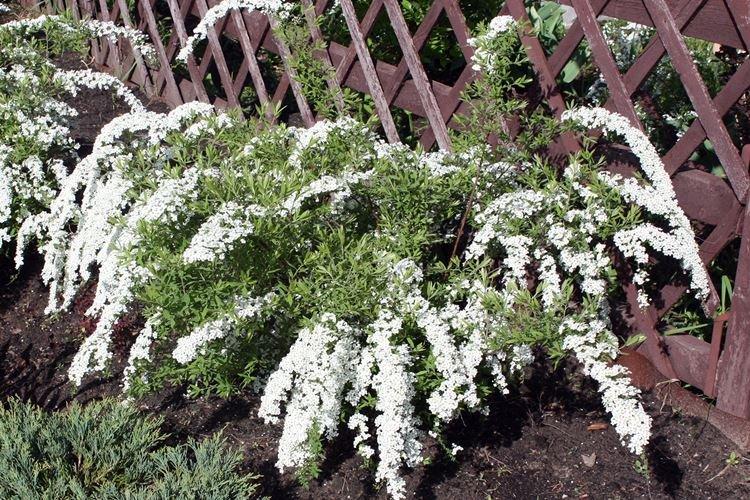
The soil
Spirea prefers ordinary leafy soil or sod, into which peat with sand is introduced for friability. The shrub is not too picky about the composition of the soil, but the richer it is, the more magnificent it will be. A good drainage layer of sand or broken brick is imperative.
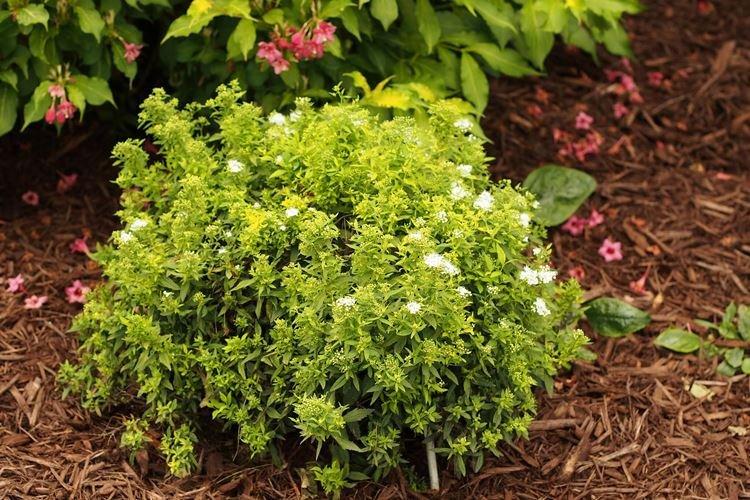
Fertilizers and feeding
Spirea does not need too intensive feeding, but with it it will bloom even more magnificently and longer. The simplest organic fertilizers, such as mullein infusion, with the addition of a sachet of superphosphate, are well suited. We recommend mulching the trunk circle so that the shrub does not overgrow with weeds.

Transplant and reproduction
Not all types of spirea can be propagated by seeds, and this is too long. In the first year, only one shoot without branches and one taproot is formed. More or less normally, the bush will branch out only after 3-4 years, and then it will be able to bloom for the first time.
Shrubs reproduce well by cuttings, and the survival rate reaches 70% on average. Some varieties even give 100% rooting with minimal treatment with stimulants.
Alternatively, in the spring, layering is used, which is bent into a depression in the ground, pinched, instilled and must be insulated for the winter. Next year, it will be possible to separate the cuttings from the mother plant and transplant them separately.
When planting spirea in a hedge, a distance of about half a meter must be left between the seedlings. For planting a spirea in group plantings, it can be varied up to a meter. The depth of the hole under the rhizome is also about half a meter.
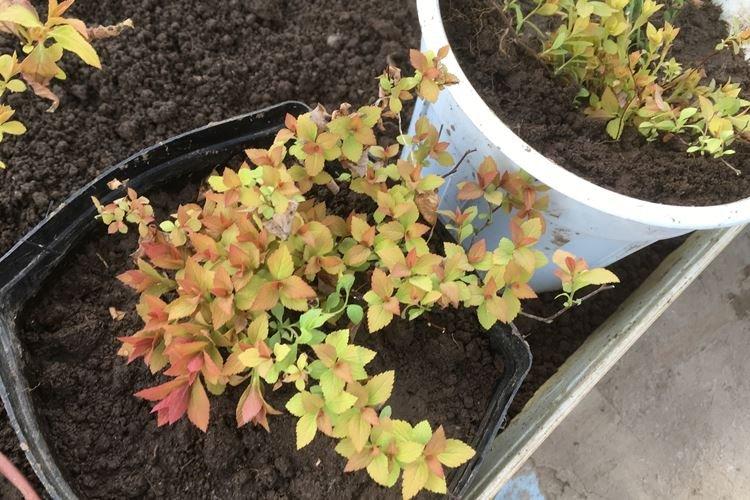
Pruning
The specifics of pruning spirea depends on the specific variety, because they form inflorescences in different ways. In early species, buds are formed on all last year's shoots, so they cannot be cut off annually. In late species, inflorescences develop only on new shoots of the same year, so they need to be pruned in the spring.
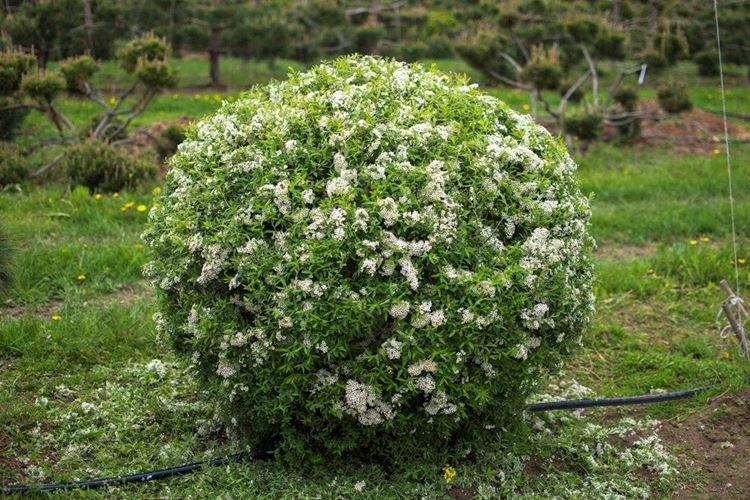
Wintering
Most varieties of spirea winter well in mid-latitudes and in the northern regions. In some of them, even flower buds are damaged only at temperatures of -50 degrees. For more sensitive species, it is recommended to tie the tops into a bundle so that they freeze less.

Pest and disease control
Spirea has a very strong immunity from nature, so most diseases in one way or another provoke improper care. Due to waterlogging, fungal diseases such as verticillosis appear. The methods of struggle are always the same - as soon as possible to remove the damaged fragments and treat the bush with insecticides.
Of the pests, spirea are loved by spider mites and aphids, which the absolute majority of plants in the garden cannot avoid. We recommend using home remedies whenever possible and using chemical insecticides only as a last resort.
Spirea is loved by caterpillars, which eat away at its succulent leaves, and anthills are often found near it. On the outside of the leaf plates, a rosaceous miner settles. The shallow root system attracts garden rodents and moles.

Spirea - photo
You probably had to deal with a spirea, although it was not always clear that it was her.Take a look at the pictures of how varied her flowering bushes can be!
